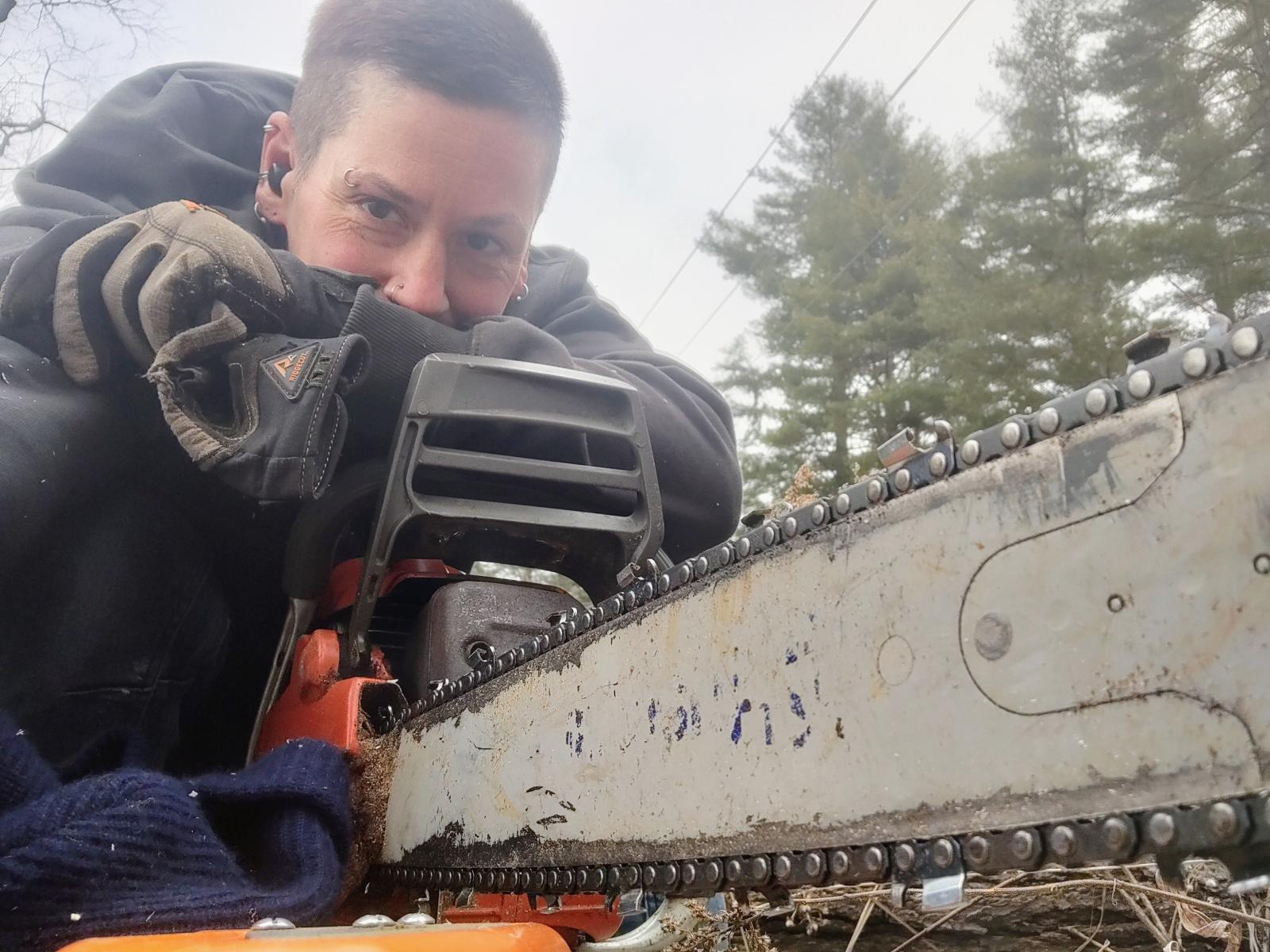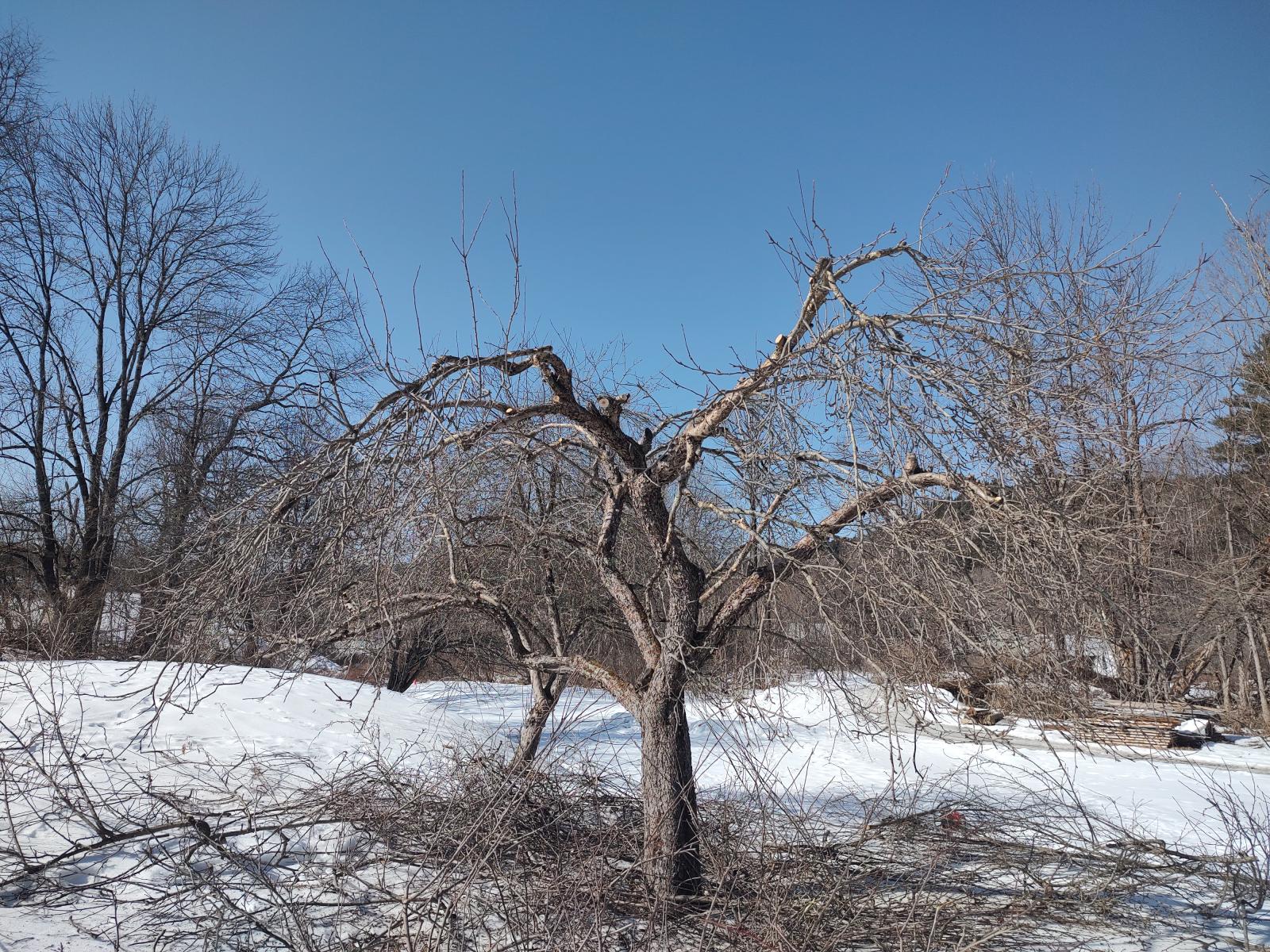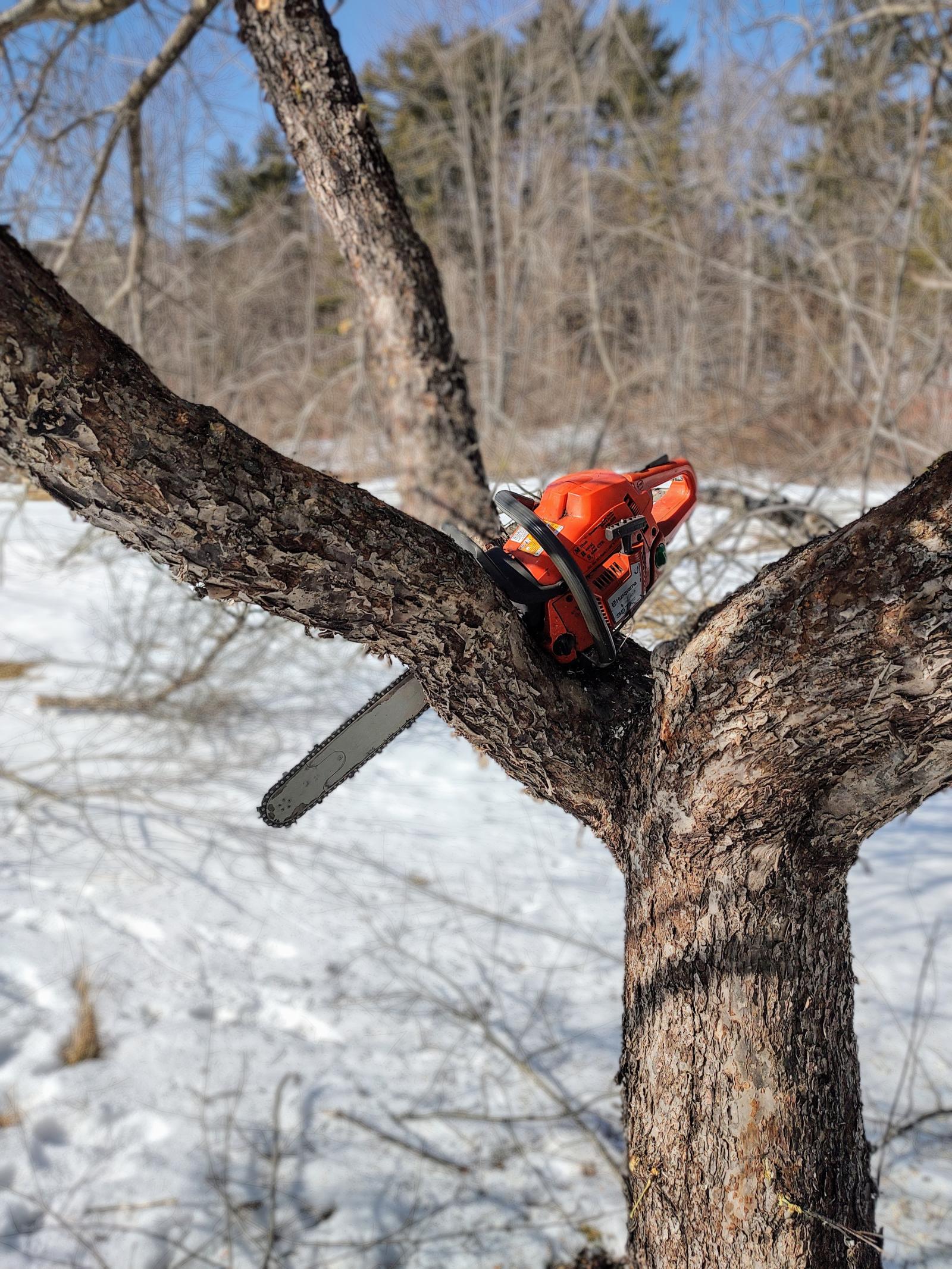Forgotten Apples
By Elisabeth Mazzilli, WoW member

It seems like no Vermont woodland landscape is complete without the skeletons of old apple trees, either planted in forgotten pastures long filled in with a thousand saplings and teenage trees fighting for space, elbowing their way to the openings in the ever-shrinking canopy, or through happenstance as animals carried the fruit and seeds through the forests in their stomachs. One of my favorite landscapes that I find myself in so often is the abandoned orchards, old gnarly apple trees suffocating from their suckering and growth, with snapped limbs and old pruning marks. I do a lot of pruning for folks around this time of the year, and my favorite subject is these old forgotten apple trees, still full of vitality and fruit, but growing completely out of control.
I took a large pruning job this February that consisted of around 40 overgrown trees. They had been pruned probably about a decade previously, but the owner had simply decapitated every tree. I've never seen such methodical and precise damage done to every tree. But apples are resilient, and despite this savage, but oftentimes typical, approach to upward growth, each and every one had rallied and continued to grow in all directions, even upwards in defiance to the brutal method used to discourage such growth.

This was the first year I found myself pruning completely alone without someone on the ground, and I was struck again by how dangerous and difficult the work is, moving through a tree with a variety of saws. Many of the suckers were easily the size of my upper arm and required careful and precise cutting to have them fall in the direction intended. I always try to climb above the branches I'm cutting, but sometimes the tree simply will not allow that kind of maneuverability. It's pretty easy to correct with a handsaw but when you're operating a chainsaw, it can occasionally be difficult to predict where the branch is going to fall, especially with how entangled these trees had become within themselves. In the course of the days that followed, I only had to take evasive action once, relying on my years of experience with pruning and quick senses to make the correct decision to bail when a cut went wrong.
 Despite how much of a toll pruning takes on my body, with the constant climbing and running saw, it is some of the most satisfactory work I engage in. Opening up those old trees, cleaning up rot and dead limbs, creating lines of fruiting branches: it's almost as if you can hear the tree breathe a sigh of relief as the unwanted and unneeded weight drops away. I finished just before a particularly heavy wet snowstorm and when I visited the orchard a couple of days later, none of the apple trees had suffered any storm snap from the weight of the snow.
Despite how much of a toll pruning takes on my body, with the constant climbing and running saw, it is some of the most satisfactory work I engage in. Opening up those old trees, cleaning up rot and dead limbs, creating lines of fruiting branches: it's almost as if you can hear the tree breathe a sigh of relief as the unwanted and unneeded weight drops away. I finished just before a particularly heavy wet snowstorm and when I visited the orchard a couple of days later, none of the apple trees had suffered any storm snap from the weight of the snow.
I will continue to take pruning jobs as they are offered. Working with these old trees connects me to a past, a line of Vermonters who planted these trees for food, a host of animals who carried these seeds in their mouths and stomachs, unknowingly planting the forest apples we stumble across.